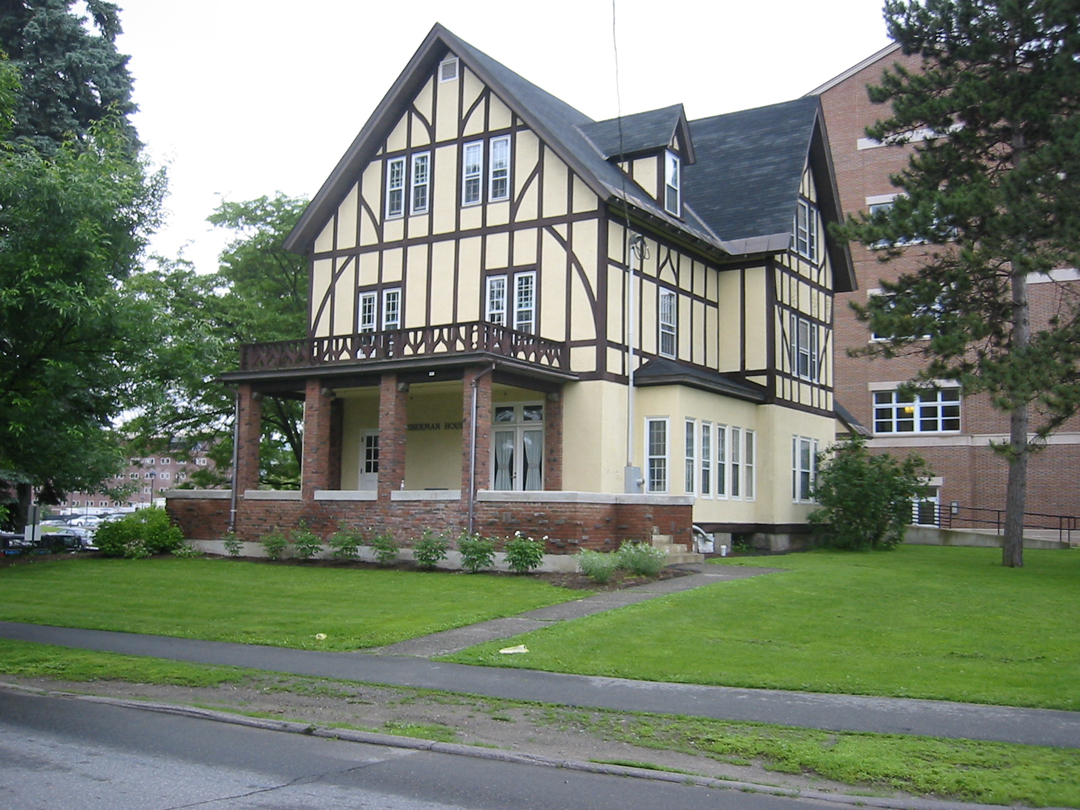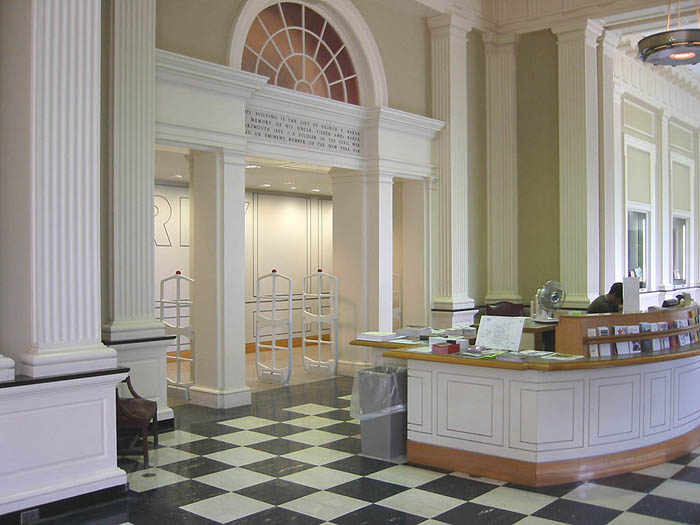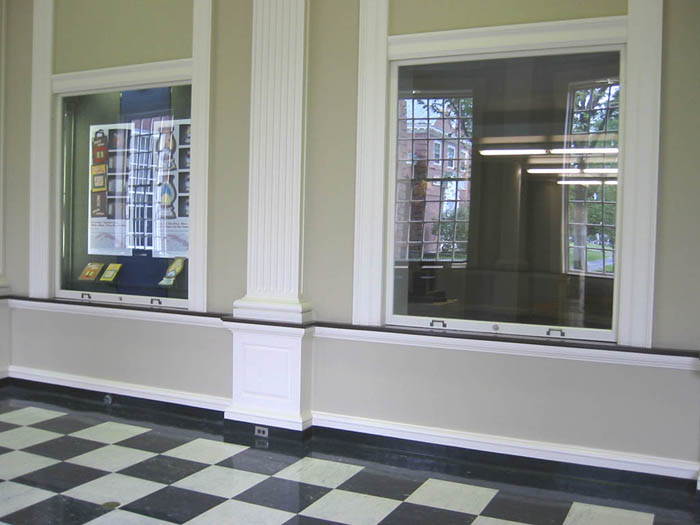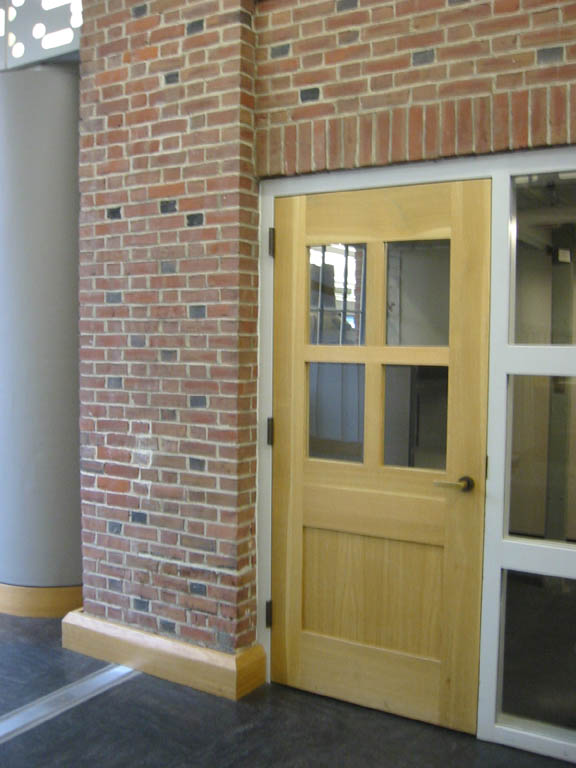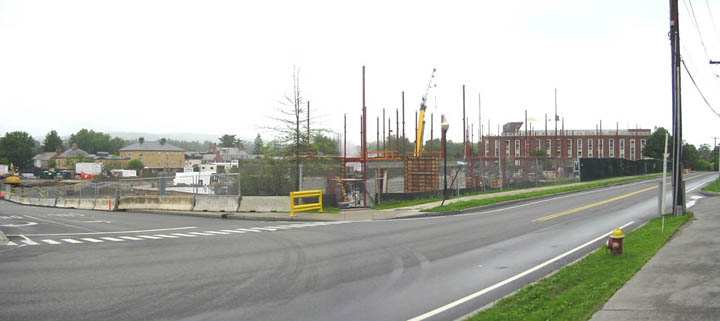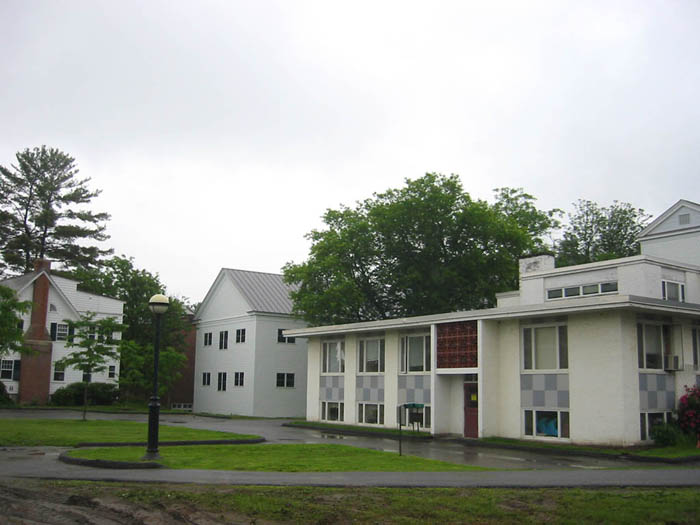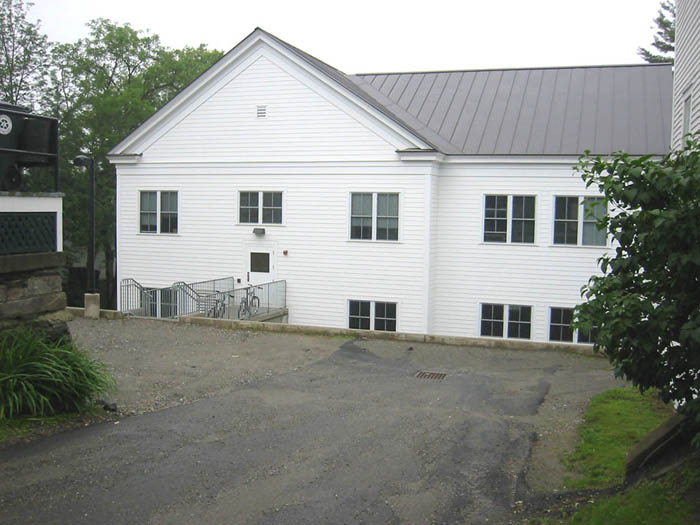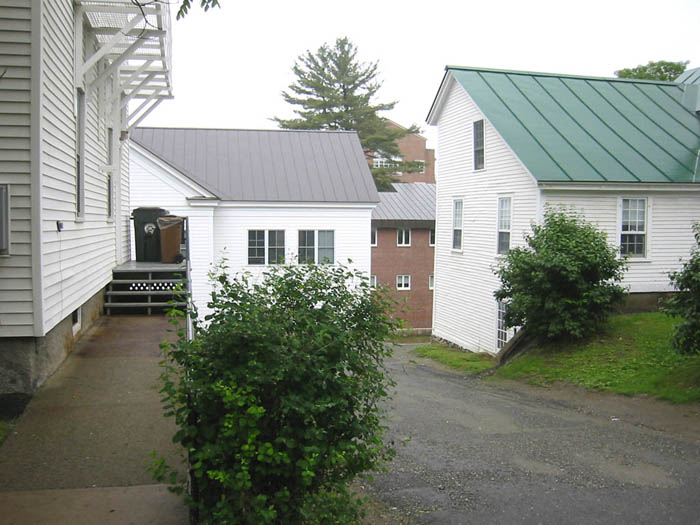The University of Virginia has selected Moore Ruble Yudell to design an important addition to the Thomas Jefferson/McKim, Mead & White Lawn. The U.Va. magazine cites the firm’s design for Dartmouth’s Kemeny Hall to reassure readers that the architects respond to traditional building forms.
Category Archives: north campus
Phi Tau architects noted
The firm that designed the new Phi Tau house turns out to be Weimann Lamphere Architects.
McLaughlin Cluster taking shape
This view from Gilman toward Baker last November showed the McLaughlin Cluster under construction. Dragon is at the far left and Sudikoff is visible in the gap between the new buildings. The view is a composite of photos taken remotely using the McLaughlin webcam.
Medical School to be named
General Sylvanus Thayer’s 1860s donation of $70,000 for a Thayer School of Architecture and Civil Engineering (1871) would be worth about $61.7 million today, after five percent annual compounding; Edward Tuck’s 1899-1929 donations for the Amos Tuck School of Administration and Finance (1900) would be worth about $121.4 million. It is harder to estimate how much the right to name the Dartmouth Medical School would be worth, since Dartmouth itself funded most of the cost of starting the institution in 1797 and has failed ever since to take advantage of the opportunity to name it for a benefactor. But now we know: the opportunity to name the Medical School is probably worth $150 million, which is the amount Dartmouth now seeks for that right, according to a Development Office brochure.
One wonders whether the school will be called the “[Name] Medical School” or shift to the “[Name] School of Medicine at Dartmouth College” to match the other two professional schools.
The granite post on North Main
A granite post on North Main Street (visible to the left of the pickup in a Math Department photo) has been left up during the construction of the latest building adjacent to it, Kemeny Hall. The post appears to be the last surviving element of confectioner E.K. Smith’s 1868 house.
[Update 12.31.2006: construction photos showed the post lifted out of the ground, and photos of the completed Kemeny Hall do not show it.]
The construction boom
In a speech to the faculty on October 31, President Wright announced: “I think we can confidently say that there has never been as much construction at any one time in our history.” Below is an excerpt from his speech as it relates to each future building project, with speculation about the architects added. In the context of architecture as a world art form, the most important project is the first listed here; the project that is most important to the school is listed second:
- “We are already in the planning stage for the visual arts center and will be continuing that process during the coming months.”
–Designer: Machado & Silvetti - “In the area of student life we are also in the final stages of planning a new dining hall north of campus, and a replacement dining hall at the current Thayer Dining site. The Class of 1953 has provided the funding for the north of Maynard Street facility, which will include space for graduate students. The dining projects will be staggered and will cause some disruption as we will need to complete the north of Maynard project before we begin at the Thayer site.”
–Class of ’53 Dining Hall designer: presumably Moore Ruble Yudell
–New Thayer Dining Hall designer: possibly Centerbrook - “The Tuck School has plans for a living and learning center and they are moving forward with that aggressively. They already have most of the funding in place and are working on construction design, with the intent of starting construction during the second half of next year.”
–Designer: Goody Clancy - “The Medical School is moving ahead with their plans for a translational research building to be constructed near the hospital in Lebanon.”
–Designer: possibly SBRA - “The Grasse Road III project, currently before the town for approval, will provide more affordable housing than can be found in the local market.”
–Designer: unknown, possibly William Rawn Associates - “The life sciences building has been a challenge both in terms of fundraising and planning. Our original notion of a shared laboratory facility with the Medical School has evolved, and we are now thinking about a facility on the Hanover campus that will be primarily for the Biology Department, with only some classroom and meeting space for the Medical School. While this remains one of my very top priorities for fund raising, we are also looking at ways to use debt financing and internal resources to ensure that this project moves forward in a timely fashion.”
- “I have asked the Provost to review plans for renovation of the Dartmouth Row buildings and Carpenter Hall.”
Planning office renamed
- It seems that the the Facilities Planning Office (previously the Office of Facilities Planning?) has become the Office of Planning, Design, and Construction (see the website of September 2004, showing old name while accessing current images; the name of the site directory is still “~fpo”).
The new name is clearer and more informative, but nothing beats the style of the design office that is associated with the Capitol in Washington: The Architect of the Capitol.
- The walls are up in the McLaughlin Cluster (webcam looking south from Gilman), being built by Engelberth
- Kemeny/Haldeman is in its yellow stage and the steel framing for the tower (no name apparently announced yet) is up (photos from the Math Department project site).
- The Dartmouth has more on Fred Wilson’s exhibition in the Hood and about the Hood.
- Skypic has available aerial views (1 | 2) of Dartmouth.
Sherman House addition
The Native American Studies Department anticipates a substantial addition to Sherman House (mentioned):
Front (west) and side (south) facades of the Frank Asbury Sherman House (1883)
Baker post-renovation
Three views of the renovated Baker Library:
The welcome desk above follows almost exactly the form of the earlier circulation desk, but with paneling depicted rather than attached. Now patrons enter the Berry addition through the librarians’ old passage to the stacks. Note the new colors for the library’s main hall, presumably based on historic colors.
The reflection prevents this photo from showing that one of the display cases has been removed to make a window onto the passage leading back to Berry.
As another local instance of outside becoming inside, an exterior wall of the original Baker stacks now lines the passage to Berry. VSBA installed a door here.
White Church alterations
McLaughlin Cluster rising
The view from a webcam shows the walls rising at the eastern trio of dorms in the McLaughlin Cluster.
View of a McLaughlin building
Sudikoff addition
Kemeny/Haldeman topped off
Buzzflood points to a Vox article noting that Kemeny/Haldeman was topped off Friday, July 15. The Math Department has photos of the tree and flag atop the building’s yet-unnamed tower.
Alternative to VSBA master plan
Artist Michael Singer led a team of designers in proposing an alternative to the VSBA plan for the North Campus during 1996.
Construction boom
The Valley News reports on the largest construction boom in recent memory, with $180 million in College and Town projects underway.
McLaughlin dorms named
The school has selected the names for one of two dormitory trios being built in the McLaughlin Cluster. The three connected buildings will be called Berry Hall, Bildner Hall, and Byrne Hall II according to a press release.
Three families gave about $6 million each for the buildings: John and Shirley Berry, Charles Berry, and Roberta and George Berry ’66 funded a dormitory to be named for John W. Berry Sr. ’44; Joan and Allen Bildner ’47, Tu ’48 funded Bildner Hall; Dorothy and John “Jack” Byrne Jr. and their sons John Byrne III ’81, Mark Byrne ’85, Tu ’86, and Patrick Byrne ’85 funded Byrne Hall II.
Elm Walk
The school may have made this official earlier, but it has started using the phrase “the Elm Walk” to describe the new collegiate open space between Berry and Maynard Street.
While still a proposed design, this space was referred to by some as a “second Green” (compare a sketch of the big VSBA proposal to other spaces on campus). Beginning with the construction of Moore Hall, the school seems to have emphasized the nature of the space as an armature or route rather than as an enclosed volume per se.
One wonders whether the school could drum up donations to give this walk a memorial function like that of Tuck Mall at Dartmouth or McCosh Walk at Princeton.

